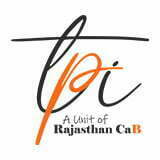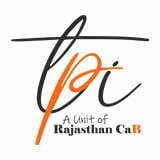
One of the largest museums in India, located in Delhi, lies the National Museum of India, established in the year 1949. The museum is no less than a paradise for people who are enthusiasts of history, archaeology, and heritage. Being one of the largest museums in India, the National Museum of India houses around 2 lakh artefacts and works from the prehistoric era and modern works of art and covers a horizon of around 5000 years. The museum is governed and funded by the Ministry of Culture and Ministry of Tourism, Government of India.
Here’s an article, which includes all the information of about the National Museum of India, Delhi. So, let’s take a sneak peek into it –
Traveller’s information
Entry Fee:
- 20 per person for Adults
- 650 per person for Foreign Tourists (including Audio Guide)
- 0 Free entry for Students upto class 12th (with I-cards)
- 0 per person for Still camera
Entry Timing:
10:00 AM to 6:00 PM (Remain Closed on Monday)
Location:
Rajpath Area, Central Secretariat, New Delhi, Delhi, 110001, India
History of the National Museum of India
The National Museum of India is located on the outer circle of Connaught Place, between Janpath outer circle of Connaught Place, between Janpath and Maulana Azad Road. The Gwyer committee laid the blue-print of the National Museum of India in the era of 1946. The museum is an outcome of a successful exhibition held at the Royal Academy in London and later at Rashtrapati Bhawan which was held in the year 1949. The then Governor-General of India, Shri Chakravarti Rajagopalachari, inaugurated the museum and Pt. Jawaharlal Nehru laid the foundation stone of this museum. On the 18th of December, 1960 the building was made open to the public.
Departments at the National Museum of India
When you visit the museum, you must have enough time to discover each one of its departments with ease. There are overall 16 departments at the museum, which preserve the heritage in a well-maintained way. These departments are –
- Prehistoric Archaeology
- Archaeology
- Manuscripts
- Numismatics and Epigraphy
- Paintings
- Arms and Armour
- Decorative arts
- Central Asian antiquities
- Pre-columbian art
- Jewelry
- Anthropology
- Education
- Public relations
- Publication
- Conservation
- Display
All these departments are based on and cover almost all types of artefacts and collections at the museum.
Collection Galleries at the National Museum of India
Besides the departments, there are 21 collections of galleries at the museum where exhibits, paintings, and collectibles from different ages and times are well-kept. These are –
Harappan Gallery – Also known as Indus Valley Civilization and Indo-Saraswati Civilization, various artefacts from the Harappan Civilization are preserved in this section. The idols are works of art made from Terracotta, Bronze, Ivory, Semi-precious stones, and Bone objects.
Maurya, Shunga and Satvahana Arts Gallery – The objects under this gallery include objects from as old as the 4th century BC to the 1st century BC. The gallery-Mauryas, Shungas and Satvahanas.
Kushana Gallery – 1st to 3rd Century CE was the Kushana Dynasty reign. The famous Gandhara School of Art and the Mathura School of Art were prevalent during the time. Greek Iconography had a huge influence on the Kushana Gallery.
Gupta Gallery – The artwork and scriptures from the Gupta Dynasty ruling from the 4th to 6th Century CE and exhibited. The most famous sculptures are from Mahabharata and Ramayana.
Medieval Arts Gallery – It is divided into two sections: Early Medieval and Late Medieval. The gallery contains a combination of arts from different dynasties like Vardhanas, Pratiharas, Maitrakars, Palas, etc. in the early period and Parmaras.
Decorative Arts Gallery – It has two sections, comprising objects made from Jade, Ceramics, and Ivory.
Besides these, explore the Miniature Painting Gallery, Buddhist Artefacts Gallery, Evolution of Indian Scripts and Coins Gallery, Bronze Gallery, Manuscripts Gallery, Coins Gallery, etc.
If you are planning your Golden Triangle Tour From Delhi for more than 3 days, then make sure you embark on a visit to the National Museum of India. Explore the other sightseeing attractions on a guided tour by car and driver.




